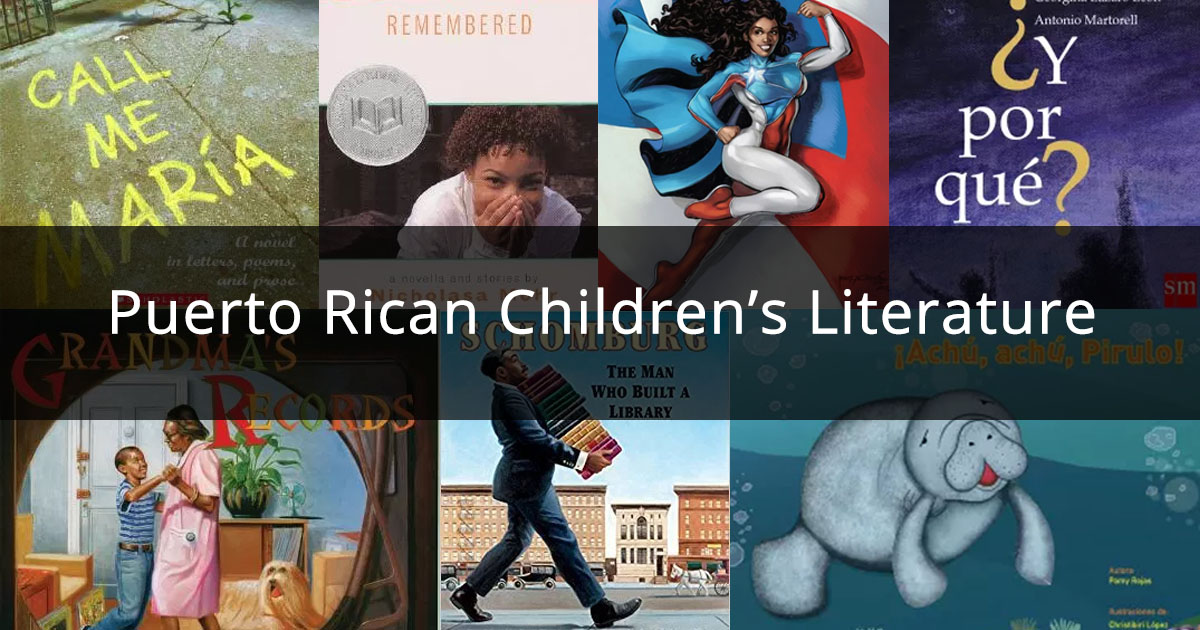
By Marilisa Jimenez Garcia, Ph.D.
Recent national news reflects the public’s lack of knowledge of the United States as a country in possession of colonies, such as Guam and Puerto Rico. In a 2016 poll, many Americans were unaware that Puerto Ricans born on the island were U.S. citizens. Moreover, Puerto Ricans remain one of the largest Latinx populations in the U.S. with a continuous migration and diaspora resulting from over a century and half of U.S. interventions and economic upheaval. Puerto Rican students’ schooling experiences are shaped by this paradox of access to American citizenship while still feeling unwelcome and marginalized in U.S. classrooms (Rolon-Dow and Irizarry, 2014).
The current economic crisis in Puerto Rico, and University of Puerto Rico student-led movements fighting for a public audit of the debt, and the #RickyRenuncio uprising make teaching about Puerto Rico an excellent opportunity for discussions about the role of young people in social change. A group of scholars have already created an excellent resource called the #PRSyllabus, which I highly recommend. Below, I have prepared a short primary and secondary source bibliography for teachers in the K-12 classroom utilizing youth literature, textbooks, and comics. This provides educators with counter-stories which celebrate the aesthetic and intellectual contributions of Puerto Rican artists and storytellers for the K-12 classroom.
These books are meant to facilitate discussion on various issues in Puerto Rican history and culture, including colonialism, race, gender, and environmental justice. This is only a sample. Teachers are encouraged to search for further resources and to continue challenging students to critique how books represent Puerto Rican history and culture, particularly with regard to issues of race, class, and gender.
Since this bibliography debuted in 2017, Hurricanes Irma and Maria hit Puerto Rico, and the island’s devastation, along with its gradual recovery, further exposed the erasure of Puerto Rico’s history as a U.S. colony and the laws and policies governing its people.
The 2019 list joins together youth literature in line with the Generación de Yo No Me Dejo and the Somos Más leading from #RickyRenuncia movement. These are resources for teaching and learning about Puerto Rico today and yesterday with an eye on self-determination and decolonial thinking for a New Puerto Rico. Children’s texts from Puerto Rico rarely receive the same attention or distribution as those published in the United States. For this reason, I also feature an independent Puerto Rican bookseller for those interested in ordering books for classrooms and libraries.
Environmental Justice
From Vieques to Peñuelas, the complications of colonialism mean Puerto Rico is often subject to unjust conditions and policies which bring pollution and toxic waste. The books below can be used to introduce the themes of the environment and environmental justice to children.
Por Ahí Viene El Huracán by Laura Rexach Olivencia, Mya Pagan, Editorial Destellos
Editorial Destellos, 2018. Spanish
Por Ahí Viene El Huracán was one of the picture books read during the July 2019 uprising in the streets of San Juan to oust Governor Rossello. When the police in Puerto Rico said that protesters’ right to protest ended at 11 PM because the Puerto Rican Constitution slept, protesters including children’s authors held an event to read the Constitution “bedtime” stories. One of them was this story of the everyday occurrences of a young girl who happens to live in Puerto Rico when Hurricane Maria hits. Rexach Olivencia gives us the perspective of what life was like for children a few days before the hurricane and then in the days after.
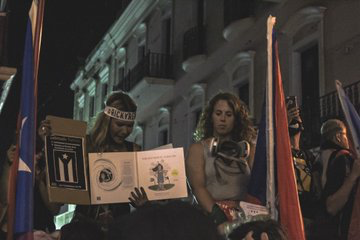
This book deals with the trauma of losing loved ones to displacement and communities organizing to clean roads and maintain food security. The book is a winner for its centering of Puerto Rican people, as opposed to just focusing on the loss of flora and fauna or damage to buildings. And for its honesty and heart while staying clear of pity and sentimentality.
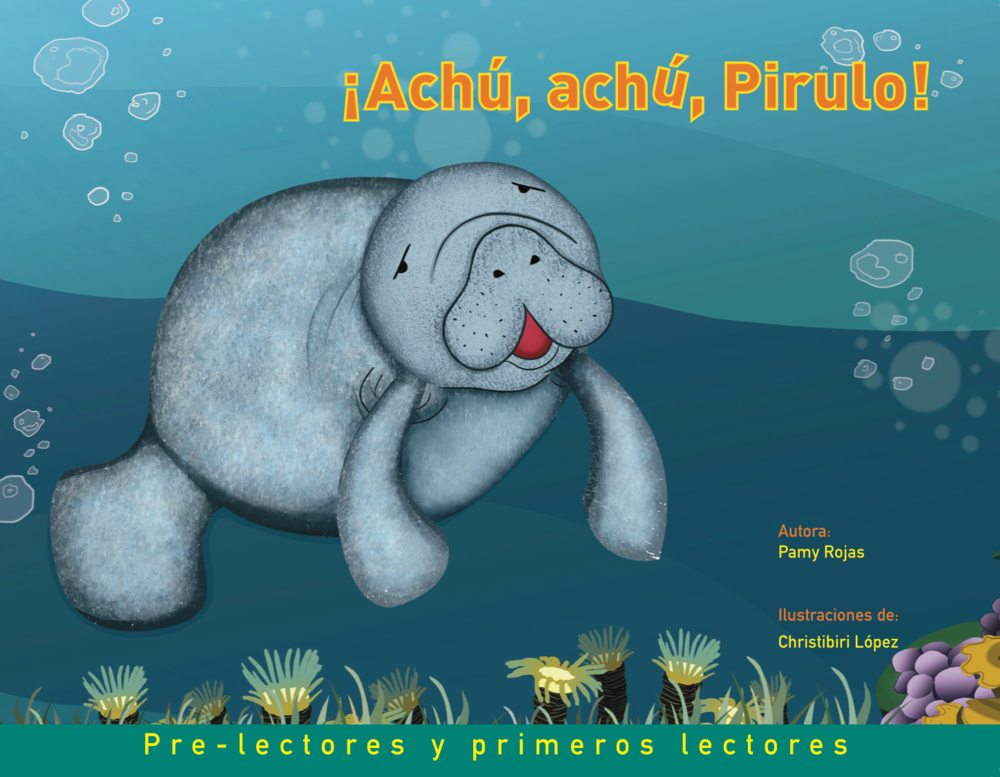
¡Achú Achú, Pirulo! by Pamy Rojas
Self-published. Spanish
Pirulo is a manatee who is suffering from the effects of pollution in Puerto Rico. Children can follow his adventures and sympathize with his desire to stay in his home, regardless of the threats to his environment. This book is written in Spanish.
Beba and Little Sister Island / Beba y la Isla Nena by Rafael Landron
Editorial Campana, 2010. Bilingual English/Spanish
Given the various environmental injustices made apparent by U.S. governmental responses to Hurricane Maria relief, it is important to remember how Puerto Rico has been used in the past as an experimental site for chemicals, coal ash, and other hazardous materials by U.S. agencies. This endearing book, written by Rafael Landron, tells the story of the island of Vieques, a military base for decades, from the perspective of Beba. Beba, a manatee swimming off its shores, witnesses test bombs and their consequences for her world and rallies other marine life in an attempt to defend the island. The bilingual story of Beba gives children another perspective on the activist victory of 2003 who gained the exit of the U.S. Marines from Vieques.
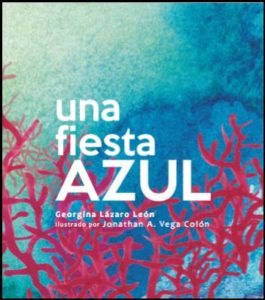
Una Fiesta Azul by Georgina Lázaro León
Instituto de Cultura Puertorriqueña, 2016. Spanish
A magical world unfolds under water for a dolphin and his friends. The simple joy of the story underscores the importance of having a clean ocean and balanced ecosystem.
Bilingualism/Bicuturalism
Tulipan, The Puerto Rican Giraffe by Ada Haiman and illustrated by Atabay Sánchez-Haiman
Self-published, 2014 (English and Spanish editions available)
This series may be ordered in English and Spanish. Ada Haiman wanted to create a character which would defy stereotypes and familiar tropes associated with Puerto Ricans. Her book resists the traditional folk culture of coqui frogs and flamboyan trees. Instead, Haiman, a former professor of English at the UPR, delivers a thought-provoking tale of a Puerto Rican giraffe who struggles with her identity since she may not be what people expect. Tulipan celebrates with young readers the benefits of being bilingual and bicultural and lets children know they never have to divide themselves to embrace who they are. Haiman also offers a window into circular migration for young readers returning to the island after living in the states, and vice-versa. Tulipan challenges young readers to think beyond stagnant symbols of the past in considering what it means to belong to a community.
Race, Class, and Colonialism through the Eyes of a Child
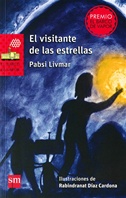
El visitante de las estrellas by Pabsi Livmar
2017, Ediciones SM. Spanish
This short yet powerful book for young adult readers is a rarity in the Puerto Rican book market, as picture books tend to dominate the choices for young readers. The rise of graphic novels and young adult novels is a welcome and needed change in order to diversify course offerings, but also to ensure the expansion of culturally-relevant literature for youth into the teen years. Pabsi Livmar’s sci-fi young adult novel is also a welcome change as books based in fantastic worlds and science fiction are often sparse for readers of color. Here, sci-fi provides a frame for examining the dynamics of prejudice. Livmar’s debut novel won her a Premio El Barco de Vapor, an award for Iberoamerican youth literature from the Fundación SM, a foundation associated with Spainish-based publishers. Livmar’s story takes place in a dystopian universe where infanos (young people) are called by number, do not possess a gender, and must navigate social hierarchies based on information from their older leaders. All infanos have an ingrained fear of the supposedly dangerous and deceptive timili (from a foreign planet). Everything changes when infano 7241, the protagonist, befriends a timili.
Livmar’s look at how youth are socialized, through her concept of infanos, provides a particularly important look at interrelated concepts of childhood and gender. Although race is never mentioned, teachers will note how the timili are distrusted for their dark appearance and are targeted as objects in a genocidal war. Targeted especially for a high school audience, teachers can use the book to talk about how racism and prejudice are taught through culture and whether young people are necessarily better or worse at learning racism and prejudice. Vice versa, whether youth are particularly suited to aid in undoing racism.
Show and Prove by Sofia Quintero
Random House Children’s Books, 2015.
Author Sofia Quintero brings together the world of 1980s Bronx hip hop culture and its historical roots between Puerto Rican and African American youth. In the same way that Jacqueline Woodson’s Another Brooklyn recovers the history, prior to massive gentrification, Show and Prove, through a poignant story of friendship, is especially important for readers and educators looking to show the sustained influence and contributions of Puerto Ricans to US and metropolitan culture beyond the 1940s-1950s. Like Nicholasa Mohr, Quintero is a master at filling the page with the dialogue of characters we know, love, and believe. The importance of showing AfroBoricua young people as agents and actors in their own stories of failure and triumph makes this book a must read.
El Bronx Remembered and Nilda by Nicholasa Mohr
Arte Público Press, 1973. Harper Trophy, 1975.
Both El Bronx Remembered and Nilda relate, practically and poignantly, the lives of Puerto Rican young people in New York City during the 1940-60s. Nicholasa Mohr creates some of the first characters to speak “Nuyorican” in U.S. letters. The issues of race, class, and colonialism, which young people encounter in these texts, however, are as relevant today as when Mohr penned them.
Youth Activism and Puerto Rican Studies Movement
Teachers should consider discussing the role that young people have played in Puerto Rican history and social change, perhaps connecting the current economic crisis and the UPR student movement to past youth movements.
The Revolution of Evelyn Serrano by Sonia Manzano
Scholastic, 2014.
Evelyn Serrano is coming of age in the middle of the rise of the Young Lords Party (YLP) in Spanish Harlem, El Barrio. Evelyn witnesses the YLP’s garbage offensive and their 1969 takeover of the Spanish Methodist Church in order to instill a breakfast program. Evelyn also learns, from her Abuela, the history of the Ponce Massacre. All of this is part of Evelyn’s development into a young woman who wishes to see herself and her people represented in U.S. history.
Shadowshaper by Daniel José Older
Scholastic, 2015.
Daniel José Older creates one of the most riveting fantasies for young readers with a kick-ass AfroBoricua protagonist. The scenes in Columbia University provide an interesting moment to revisit past ethnic studies movements and reflect on how they may have been contained by academic institutions. A wonderful story to think about self-education for liberation.
Indigenous and AfroBoricua History
It is difficult to find books which represent Indigenous characters and do not exoticize Native peoples. Similarly, there is also a lack of AfroBoricua characters in Puerto Rican literature for youth. However, here are some recommendations for teaching.
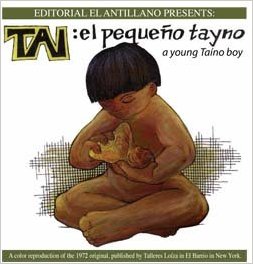
Tai: A Young Taino Boy by Neco Otero
Editorial El Antellano, 2007.
A graphic novel about the everyday life of a young Taino boy who also happens to be a cacique in training.
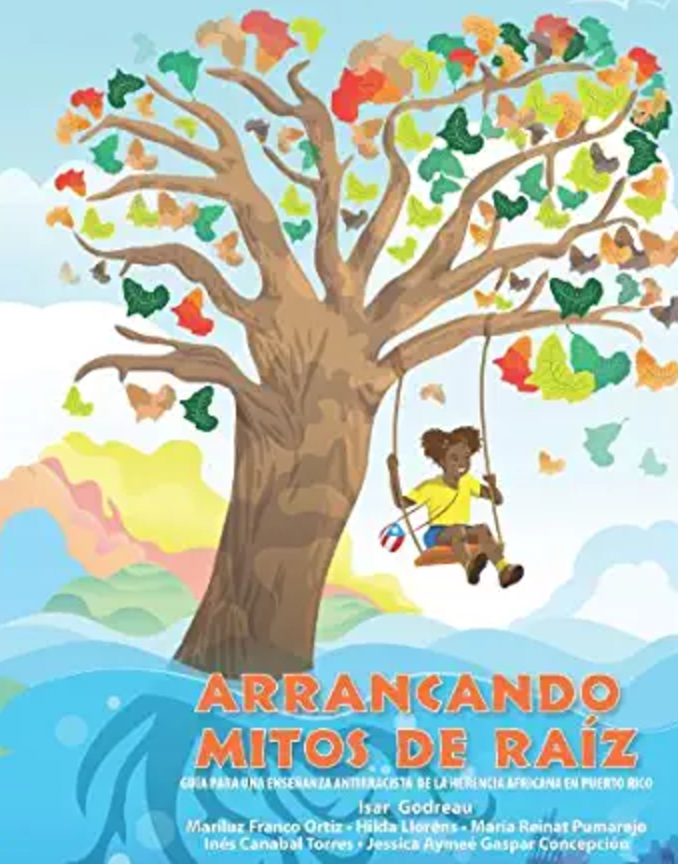
Arrancando Mitos de Raíz by Isar Godreau et al.
Editora Educación Emergente, 2015.
This new textbook is a groundbreaking resource for educators for anti-racist pedagogy on the island and in the Puerto Rican community in the United States. It includes historical readings and activities, including beautiful illustrations highlighting the island’s African heritage.
Grandma’s Records and Grandma’s Gift by Eric Velasquez
Walker and Company, 2001 and Walker Children’s, 2013.
Eric Velasquez creates a strong, nuanced AfroBoricua young male lead who learns some of his best lessons from his grandmother. Grandma’s Records and Grandma’s Gift emphasize a love of art and culture as a form of encouragement and transformation. The illustrations are excellent and recreate historical places in New York for Boricuas, such as La Marqueta.
Language
Spanish and bilingualism continue to be an important component of Puerto Rican student’s lives.
Call Me Maria by Judith Ortiz-Cofer
Scholastic, 2006.
Judith Ortiz-Cofer was a poet who asked readers to participate in what it feels to see and experience the world as a bilingual, its strengths and contradictions. This book, a mix of poems, essays, and prose, is the story of a young girl who learns to use English artfully as a tool of resistance. Maria also narrates her experience of losing her last name, something many young Latinxs may relate to.
Influential, Intellectual Boricuas
One of my former students at Hunter College once commented in class that before taking my course, she had never thought of Puerto Ricans as “intellectual.” Notwithstanding Puerto Ricans contributions to music, film, and sports, I wanted to offer here a few resources on thinking about the intellectual contributions of Boricuas to areas such as libraries, scholarship, and political thought.
La Peineta Colorada by Fernando Picó and María Antonia Ordónez, Ediciones Ekaré-Ediciones Huracán
Spanish. English also available.
Fernando Picó was a renowned historian and professor at the University of Puerto Rico. He was also an award-winning children’s author with two children’s titles among his expansive work as a writer–helping us see the importance of literature for youth in historical and social justice projects. First published in Venezuela, La Peineta Colorada won the 1987 Premio Huracán for best children’s literature featuring Puerto Rican history. Picó based the creative and humorous tale of a tight-knit Black community in Caimito on a historical record of fugitive slave laws in Puerto Rico (detailed in the back matter). This story provides young readers with a window into the history of slavery in the Caribbean and the power of culturally-sustaining stories for liberation. The characters and story are nuanced while Picó maintains his sharp writing and wit for young audiences.
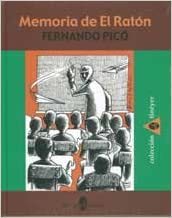
Memoria de El Ratón by Fernando Picó, Ediciones Huracán
Spanish
La Memoria de El Ratón is Picó’s short tale of economic oppression and inequality from the perspective of a San Juan teacher around the late 1950s. The story is important for thinking about how teachers intervene in spaces of inequity even as they are often restricted by structural barriers.
Planting Stories: The Life of Librarian and Storyteller of Pura Belpré by Anika Aldamuy Denise and Pablo Escobar
English (Spanish also available)
Although Lucia Gonzalez’s picture book on Belpré is already included, this new picture book by Anika Aldamuy Denise is distinctive for its characterization of a strong, self-determined Pura Belpré advocating for children of color at the New York Public Library. Aldamuy Denise, and Escobar’s beautiful illustrations, also dramatize Belpré’s time as a seamstress and her relationship to jazz musician and Harlemite, Clarence Cameron White, Belpré’s husband. The story emphasizes Belpré’s continued legacy through planting her “story-seeds.” The back matter contains resources for researching more about Belpré’s life and work.
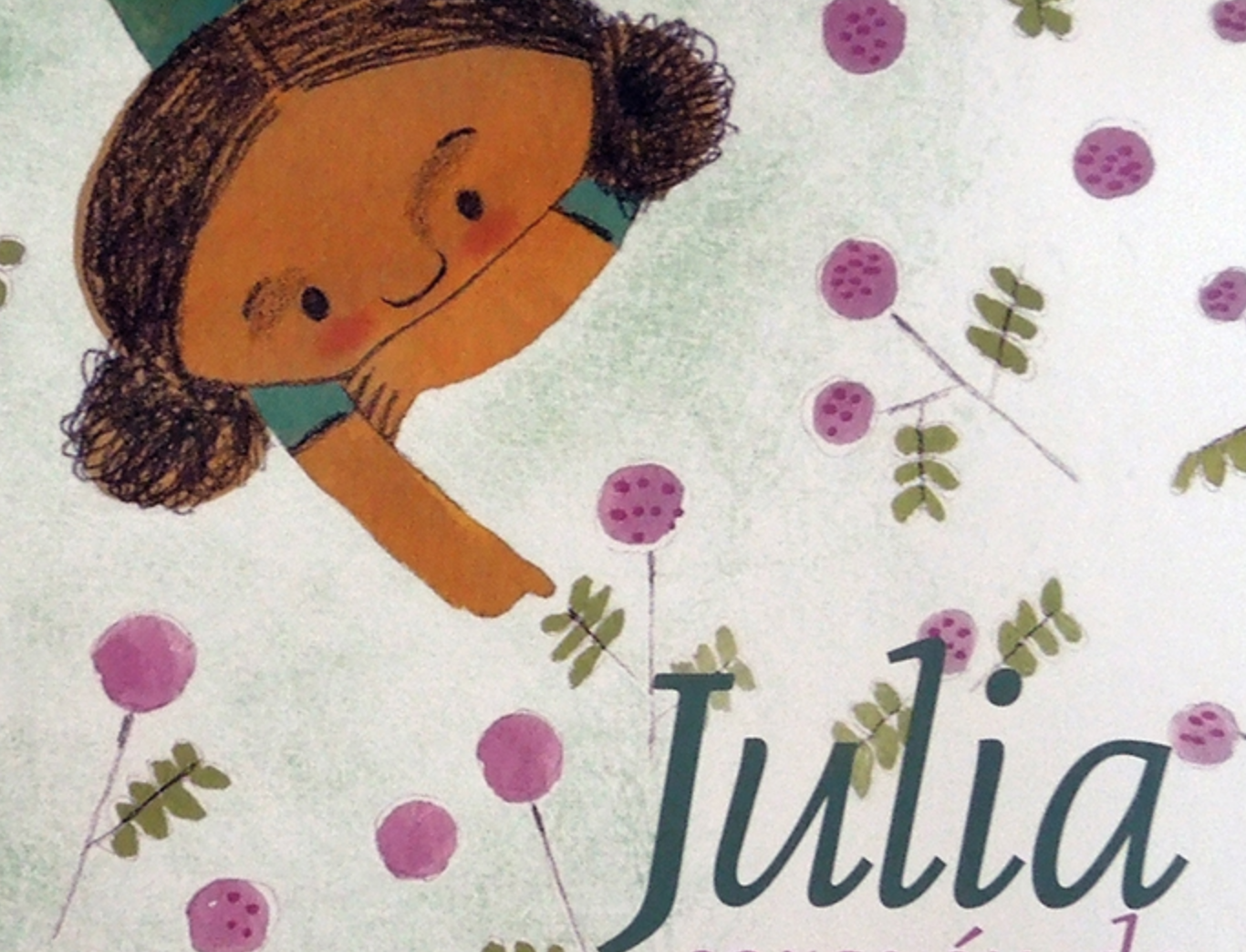
Julia, Corazón de Una Poeta by Wanda de Jesús Arevelo and illustrated by Mrinali Álvarez Astacio
Fundación Puertorriqueña e las Humanidades, 2017.
This Spanish-language gem, narrated in verse, tells the story of poet and revolutionary, Julia de Burgos. Wanda de Jesus, an award-winning writer and teacher at the University of Puerto Rico elementary school, did extensive research on the life of de Burgos and her influence on the diaspora communities in the United States. Educators and young readers can delve into this research in the book’s epilogue. At the same time, the story is told from the perspective of an inquisitive, creative young girl who loved learning and loved words— and who became one of the most renowned poets in Antillean and Latin American traditions.
The Storyteller’s Candle by Lucia Gonzalez and Lulu Delacre
Candlewick, 2009.
A beautiful portrait which recreates what it was like to attend a story time at the New York Public Library during Pura Belpré’s tenure in East Harlem. Lucia Gonzalez’s story provides moments of delight for young readers while Lulu Delacre’s illustrations capture the essence and history (even using old newspapers as part of the background) of Puerto Rican migrants in the 1930s.
Schomburg: The Man Who Built the Library by Carol Boston Weatherford and Eric Velasquez.
Candlewick, 2017.
This picture book, illustrated by award-winning artist Velasquez, promises to delight young readers with the story of Arturo Schomburg, the groundbreaking AfroBorica scholar and librarian who founded the collection that is today the Schomburg Center for Research in Black Culture. An excellent opportunity to talk to kids about what it means to identify as AfroLatinx.
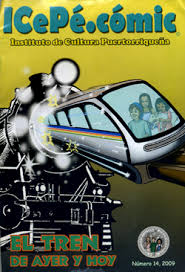
ICePé Comic series
Instituto de Cultura Puertorriqueña
A fun and inventive series in Spanish in which readers encounter beloved heroes and heroines from Puerto Rican history such as Emeterio Betances, Eugenio Maria de Hostos, and Ramon Powers. The series also features a diverse cast of Puerto Rican child characters who participate in the adventures.
Somos Más y No Tenemos Miedo: Stories for Teaching about the Current People’s Movements
A difficult and confusing subject even for adults, yet many Puerto Rican students may be entering classrooms in K-12 and higher ed within this framework. Though these resources are not about the numbers and policies creating the crisis, they provide opportunities to talk about the consequences of the crisis for youth and their families.
El Medio Pollito by Rosario Ferré
Santillana US, 1997. Spanish. English version available.
Teachers looking for stories to discuss the events of the recent #RickyRenuncia protests and marches which propelled the resignation of Ricardo Rossello should consider this fable. This story could be paired with newspaper clippings about the protests and young people might note the similarities between the obstinate king and the colonial regime in past and modern-day Puerto Rico, including Rossello’s initial unwillingness to resign. This is Rosario Ferré’s retelling of the classic Puerto Rican folktale in the 1990s when the economic crisis in Puerto Rico really began to drain public institutions. In Ferré’s retelling, a young boy with a little-half chicken (a metaphor for Puerto Rico’s neither here nor there political status) travels to the king’s palace to demand food and supplies. At one point, the little boy and his half chicken must cross a river to get to the palace. The little half-chicken successfully swallows the river whole in order for the boy to cross. The king resists the boy in various ways until “el medio pollito” vomits up the river on the king, covering the king in the waves of the sea.
The boy and his half-chicken obtain their food and supplies even though they are small and seemingly powerless against the powerful king. The story parallels some of the events during Rossello’s standoff with the people of Puerto Rico and emphasizes how we should never underestimate the power of the people and those things which might seem small and insignificant.
Anansesem: The Caribbean Children’s Literature, Special Issue: Puerto Rico
May 2019 – English and Spanish
Not since the 1983 bulletin on Puerto Rican materials by the Council on Interracial Children’s Books came out has a single, readable, and accessible issue on Puerto Rican youth literature been more timely and important. Edited by Boston-based librarian, Sujei Lugo Vásquez, this 2019 issue brings together some of the greatest minds in Puerto Rico on youth literature in recent decades. From author, activist, and storyteller, Tere Marchial Lugo, to librarian and storyteller, Isamar Abreu, to Professor Melissa Garcia Varga, Anansesem’s special issue on Puerto Rico features content and context for teachers looking for stories for their classrooms. We learn how librarians, storytellers, authors, and scholars have been working together to create networks of solidarity to survive and thrive during the current man-made and natural disasters in Puerto Rico, including the debt and Hurricane Maria.
Perhaps, more importantly, this issue centers voices and work in Puerto Rico to create bridges for how those in the diaspora and outside the Puerto Rican community might support one another. The PDF is a must-have for your classroom library and teaching circles. How can you, and your network of educators, continue supporting those writers, librarians, and educators in Puerto Rico with culturally-relevant and sustaining practices?
Puerto Rico Strong: A Comics Anthology Supporting Puerto Rican Diaster Relief and Recovery by Vita Ayala, Fabian Nicieza, and Joammette Gil
Lion Forge Comics, 2017.
This comics anthology debuted in March 2018 and served as a fundraising campaign for Puerto Rican disaster relief. The comic does not shy away from difficult moments in people’s history including Hurricane Maria, the Ponce Massacre, and the sterilization of Puerto Rican women by the government in the 1950s-1960s. Yet, the stories also center contemporary Puerto Rican history which allows for conversations about parallels between past and present struggles. Because of Puerto Rico Strong, educators have a text relevant for young readers which they can use to illustrate, document, and discuss the community’s struggle against the law of PROMESA (Puerto Rican Oversight, Management, and Economic Stability Act of 2016)—the U.S. federal oversight board managing economic debt. Additionally, and important for people’s history, the book’s diverse array of characters encourages young people to consider the triumphs of the community’s collective, intergenerational legacy as opposed to the heroism of one leader.

María Chucema Techaba Su Choza by Tere Marichal Lugo
Self-published, 2018.
Veteran storyteller and illustrator Tere Marichal has created a series of tongue-twisters (trabalenguas) which center, among many social justice issues, feminist and environmental justice themes. Maria Chucema is a familiar folk female character in Puerto Rico which Marichal, in this Spanish-language text, presents as a self-reliant, Boricua woman who revels in her collection of books.
Although written before Hurricane Maria, the story celebrates a Boricua woman who takes it upon herself to fix her leaking roof which threatens to destroy the books she loves so dearly. This story affirms and complements the wonderful stories many saw on social media during and after Hurricane Maria of ciudadanos gathering resources, clearing roads and repairing damaged buildings and even power lines. Marichal’s text and illustrations celebrate reading and storytelling culture in contemporary Puerto Rico, including a visual and literary homages to the UPR’s Centro Para El Estudio de la Literatura, Escritura, y Literatura Infantil (CELELI) yearly Maratón de la Lectura (check out the poster in Maria Chucema’s living room) and another to storyteller, Pura Belpré. The heroine holds a copy of and refers to Belpré’s beloved tale Perez and Martina. This short book allows educators to explore with young readers how authors in the diaspora influence those in Puerto Rico and vice-versa.
La Borinqueña by Edgardo Miranda-Rodriguez.
Somos Arte, 2016.
Perhaps, no other text for young people exists that so immediately places in their hands every component of current and past moments in Puerto Rican history. Edgardo Miranda-Rodriguez created La Borinqueña to lift morale in response to the economic crisis. The response to the comic has been overwhelming; even Supreme Court Justice Sonia Sotomayor is rumored to be a fan.
The comic deals with issues of anti-blackness, environmental abuses on the island, education, and the recent Pulse Nightclub shooting, all in the context of a superheroine who is meant to stir Puerto Rico’s ability to persevere in the midst of insurmountable odds.
The comic, published in 2016, also features a particularly relevant story line regarding a storm and a massive blackout on the island. Miranda-Rodriguez seemed to anticipate the ways in which Puerto Rico was vulnerable to environmental injustices in the event of a powerful weather event. Miranda-Rodriguez’s powerful drawings of the heroine flying into flooded streets provide educators with the opportunity to discuss the various consequences for Puerto Ricans in light of Hurricane Maria.
The moment Marisol transforms into La Borinqueña is also an incredible example of the power of culturally-sustaining pedagogy. Young people might discuss, and problematize, how the comic specifically depicts women as a symbol for the nation.
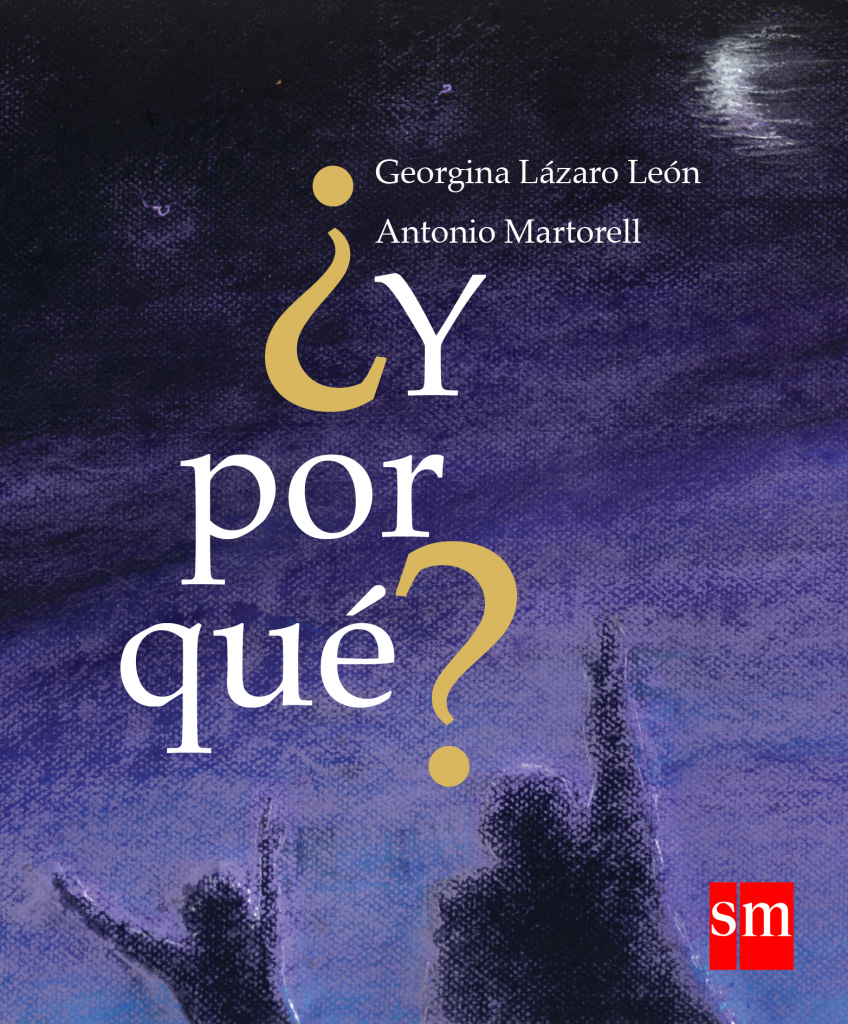
¿Y Porque? by Georgina Lázaro León and Antonio Martorell.
Editorial SM, 2017. Spanish.
On the surface, this picture book about a grandfather and his grandson, who continually asks questions, would seem removed from the current crisis. Lázaro León is a Pura Belpré honor winning author and one of the most prolific Puerto Rican picture book authors today. However, this recent book, written in Spanish, contains an important story about how adults explain the everyday and inexplainable to children, and how children struggle to understand the “whys” in the world. A beautifully told and illustrated book from Martorell, a master Puerto Rican painter, with a simple message for difficult times.
Getting Books
Aparicio Distributors
Hector Aparicio, Owner
In Bayamon, Aparicio Distributors is the only independent children’s bookstore in Puerto Rico and offers children’s books and educational supplies. Aparicio’s store includes classes and workshops for children and parents that support the whole child.
Hector Aparicio, the store’s owner, takes great care in creating an environment encouraging a love for lectura. The store also has a delightful children’s storytelling theatre, El Bosque de los Cuentos (complete with a talking tree) that is under repair after Hurricane Maria.
More than a bookstore, Aparicio’s store is also a hub for authors, artists, educators, and parents looking for ways to supplement the various problems affecting literacy and literature education in Puerto Rico, including lack of public support for school and public libraries, lack of culturally-relevant texts in curriculum, and lack of visibility and support from mainstream publishers. Aparicio offers titles from around Latin America and the Caribbean which may never show up in children’s bookstores in the United States. Consider ordering your bilingual and Spanish-language books directly from the store.
Further Resources
- #PRSyllabus: resources for teaching and learning about the current economic crisis in Puerto Rico. This is a project rising from a working group of academics on the debt in Puerto Rico that curates lists of articles pertaining to news and issues regarding the economic crisis and hurricane recovery: puertoricosyllabus.com
- #ListeningtoPuertoRico, a joint effort from faculty at the University of Notre Dame and the University of Michigan, has hours of footage and interviews from community leaders and organizers in Puerto Rico as they narrate experiences and efforts before and after the storms: listeningtopuertorico.org
- Nieto, Sonia (ed). Puerto Rican Students in U.S. Schools. Routledge, 2000
- Rolon-Dow, Rosalie and Jason Irizarry. Diaspora Studies in Education: Toward a Framework for Understanding the Experiences of Transnational Communities. Peter Lang, 2014
- Santiago, Roberto (ed.) Boricuas Influential Puerto Rican Writings An Anthology. Random House, 1995
- Afro-Latinx children’s books
- Gonzalez, Juan. Harvest of Empire: A History of Latinos in America. Penguin, 2011. Also see the Harvest of Empire film.
- Recommended organizations and films.
- Social Justice Book’s Puerto Rico Book list
- Caribbean Connections: Puerto Rico. Edited by Naomi Ayala, Rashida Welbeck, and Lynora Williams
- Boricua Literature: A Literary History of the Puerto Rican Diaspora (2001) by Lisa Sanchez Gonzalez, NYU Press
- “Puerto Rican Children’s Literature and the Need for Afro-Puerto Rican Stories” by Carmen Milagros Torres-Rivera, Bookbird (2014), 81-85.
- “The Portrayal of Puerto Ricans in Children’s Literature” by Maria A. Acevedo, Bookbird (2015), 5-11.
- Listening to Puerto Rico
- “10 Action Steps for Puerto Rico” by Agitarte
- Hashtags: #boricuaedu and #curriculocombativo – Resources from Puerto Rico’s teachers for teaching #RickyRenuncia, including three modules in Spanish grounded in Puerto Rican Studies for a new Puerto Rico.
Marilisa Jiménez García is an interdisciplinary scholar specializing in Latino/a literature and culture. She is an assistant professor of English at Lehigh University and a member of the See What We See coalition.
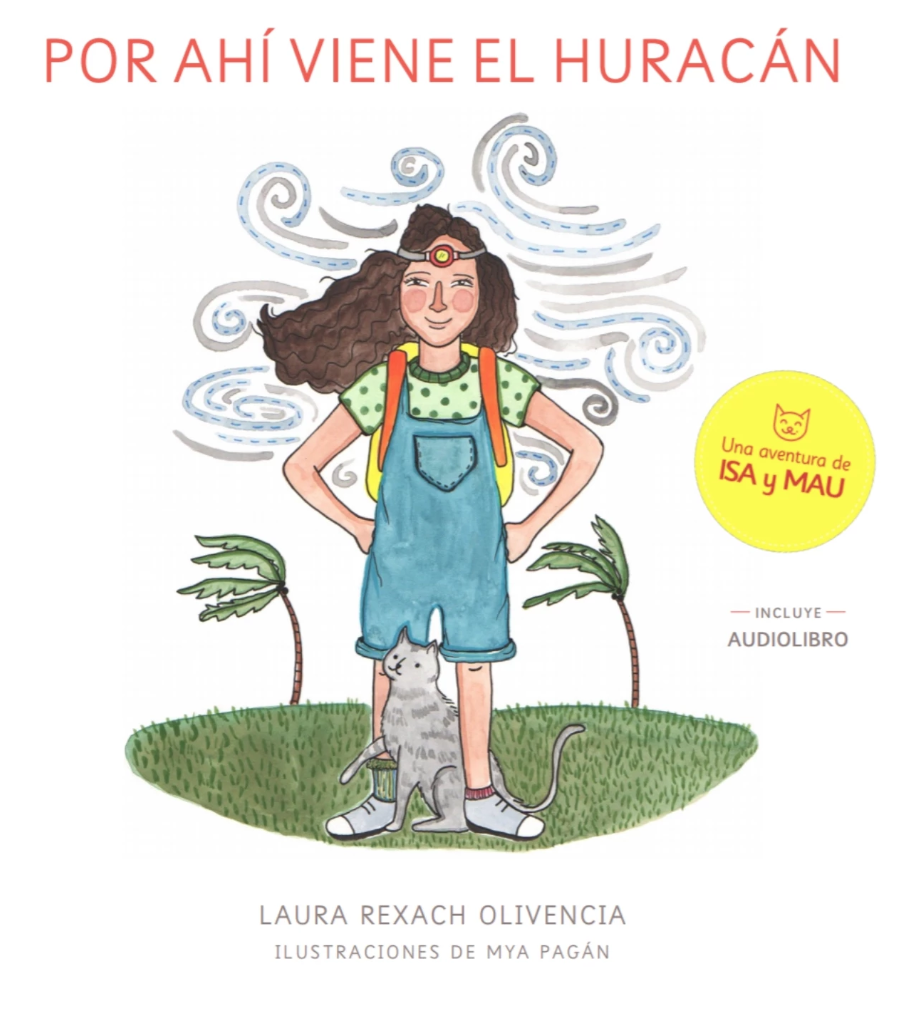
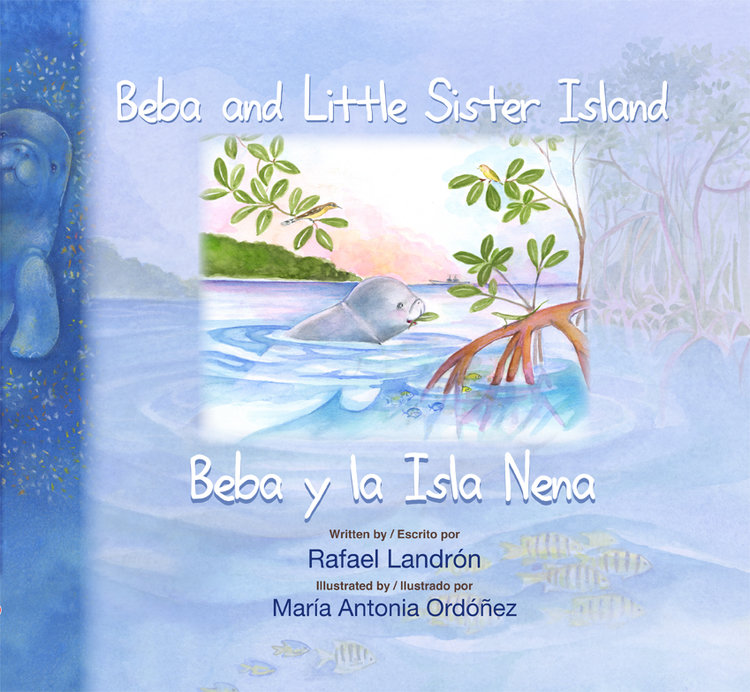
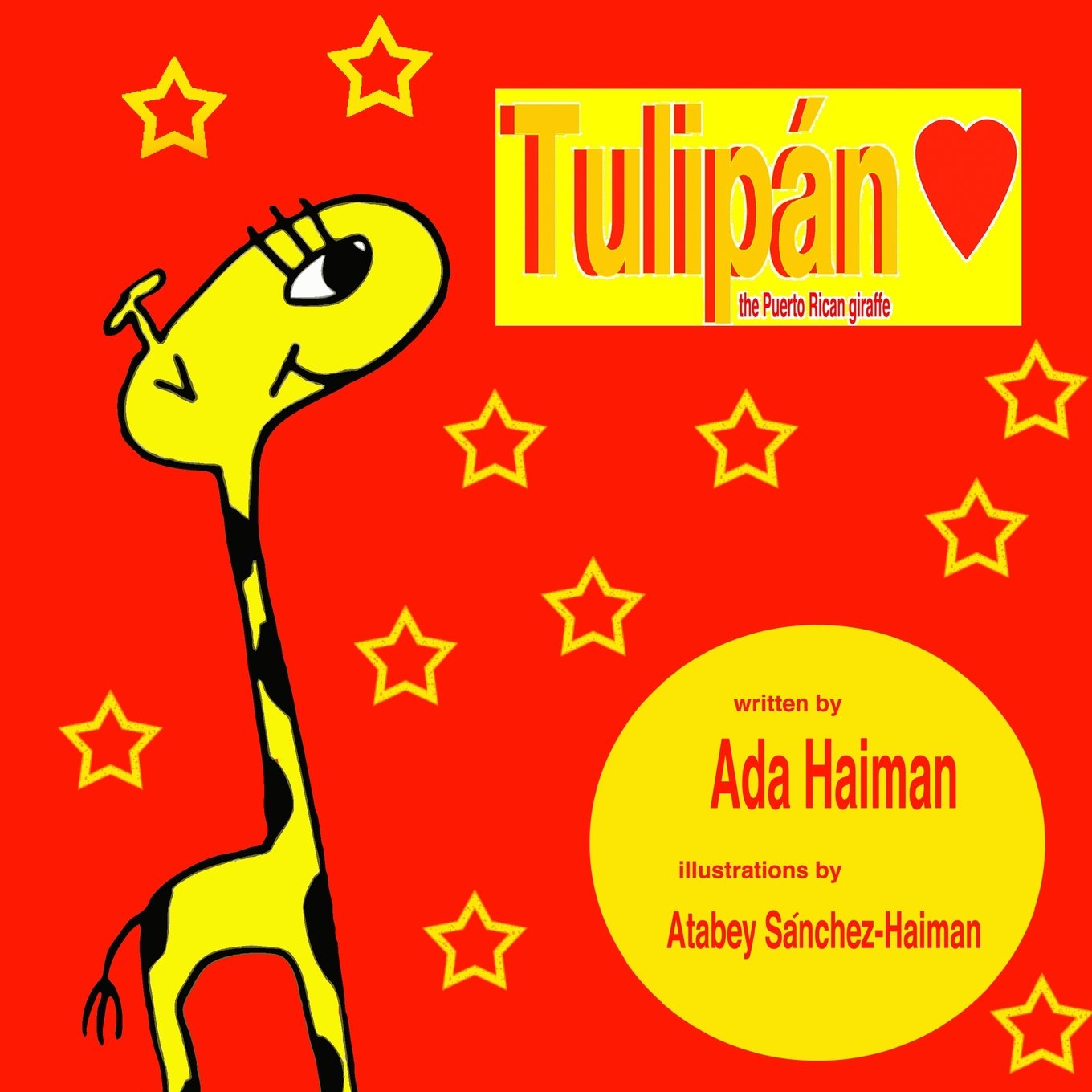
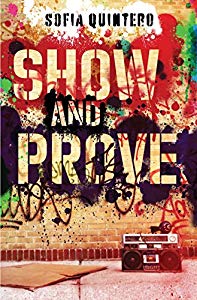
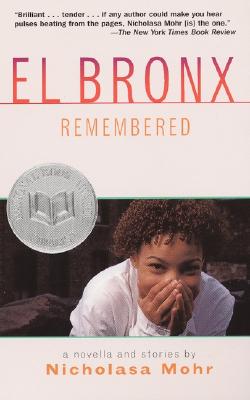
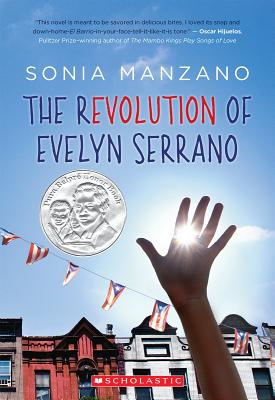
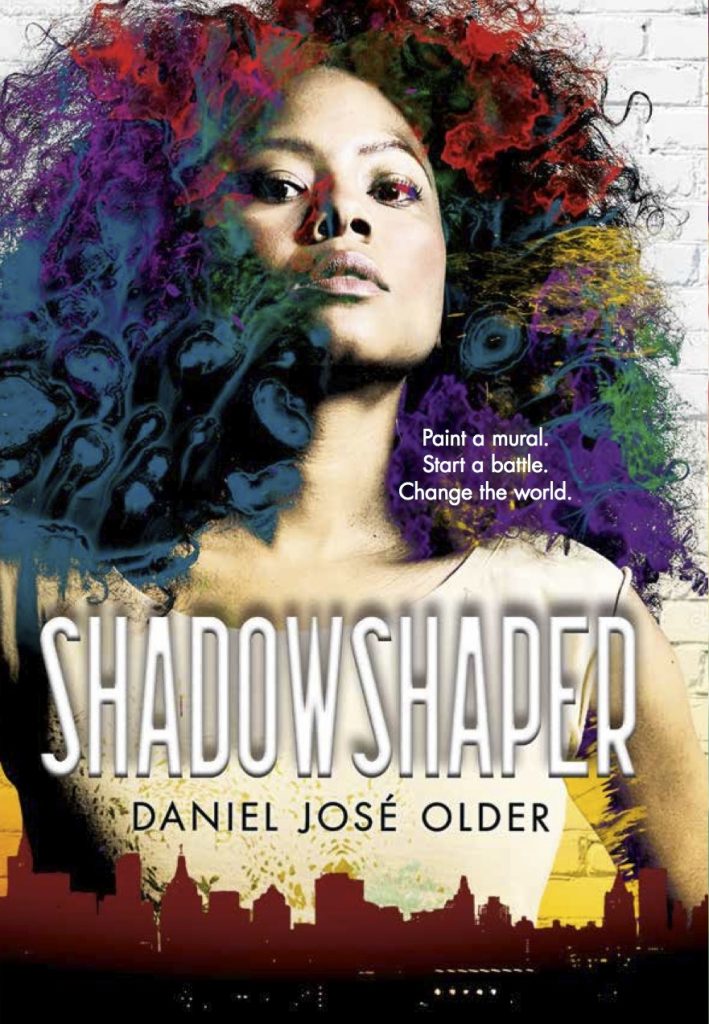
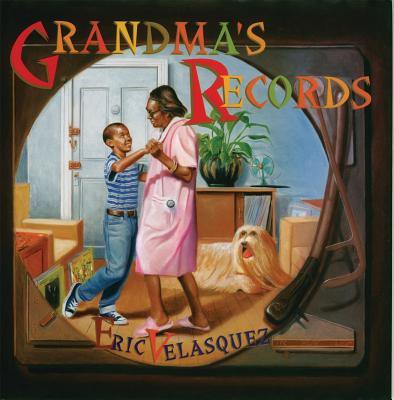
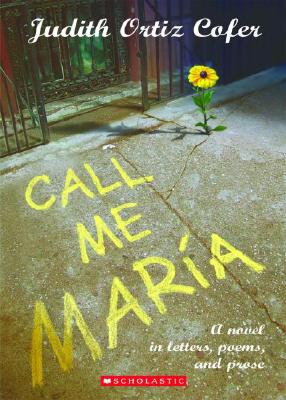
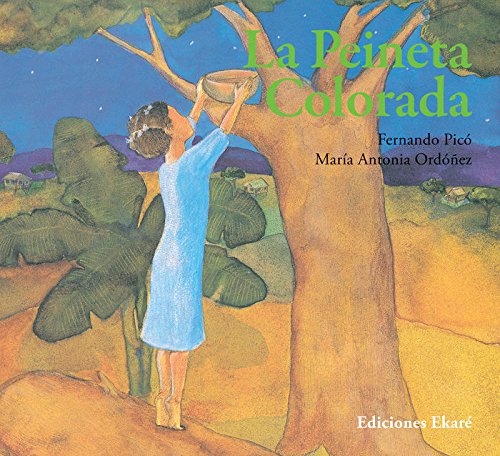
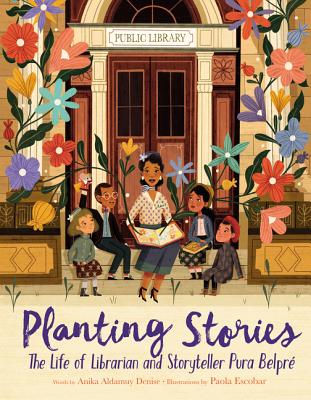
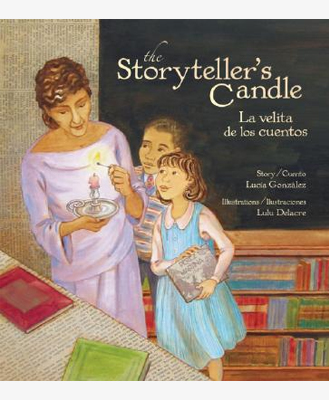
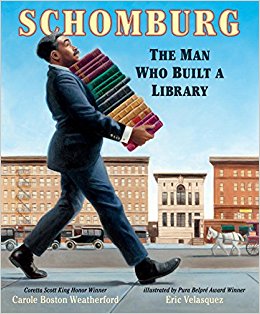
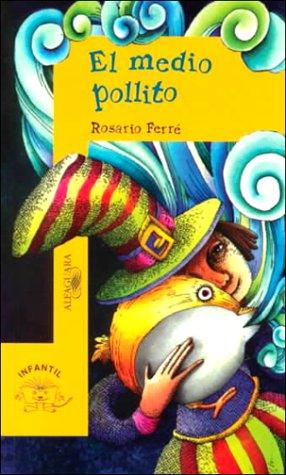
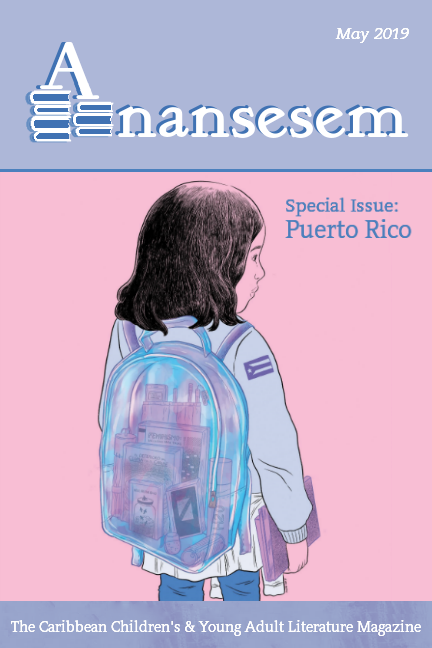
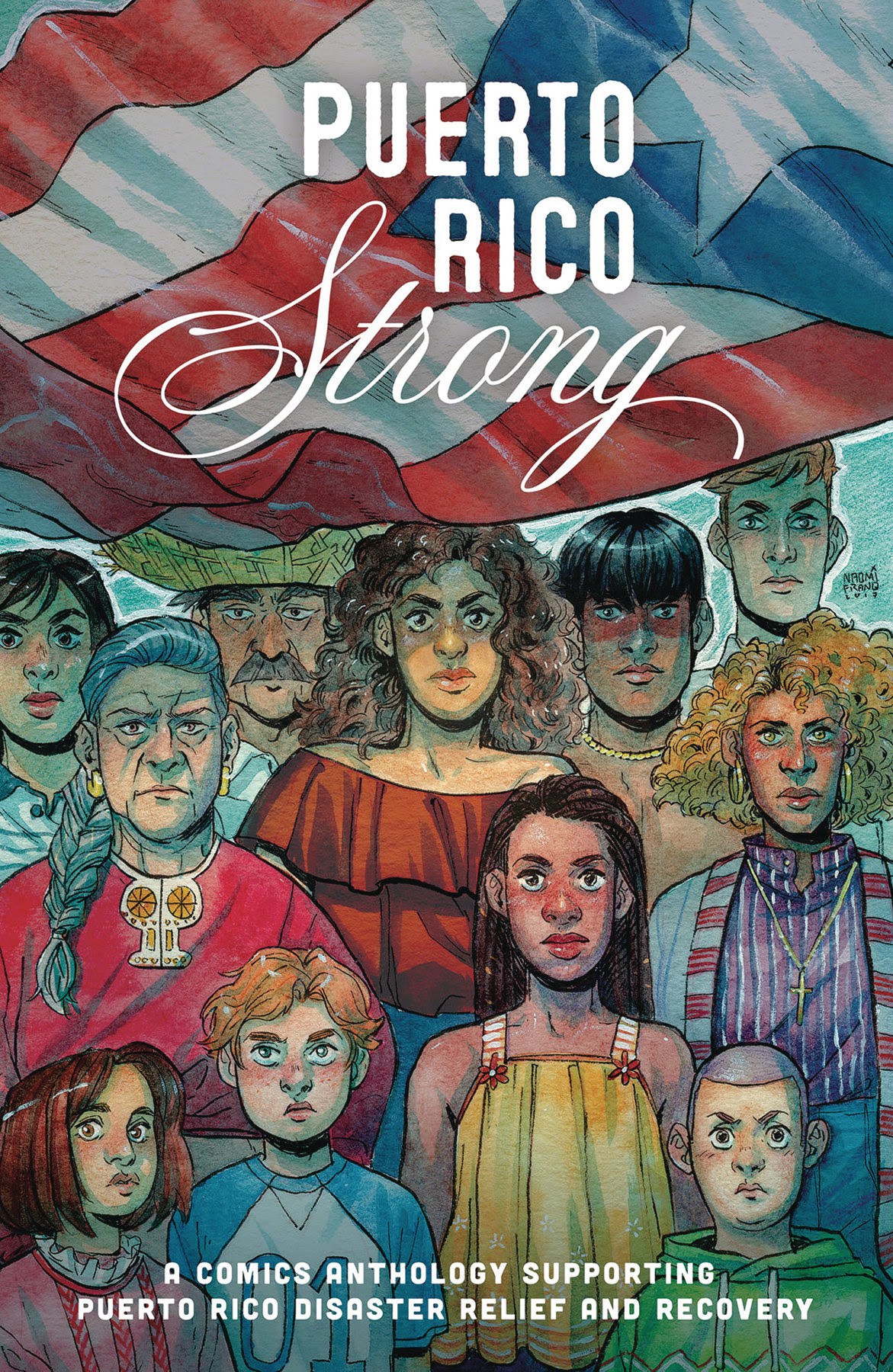
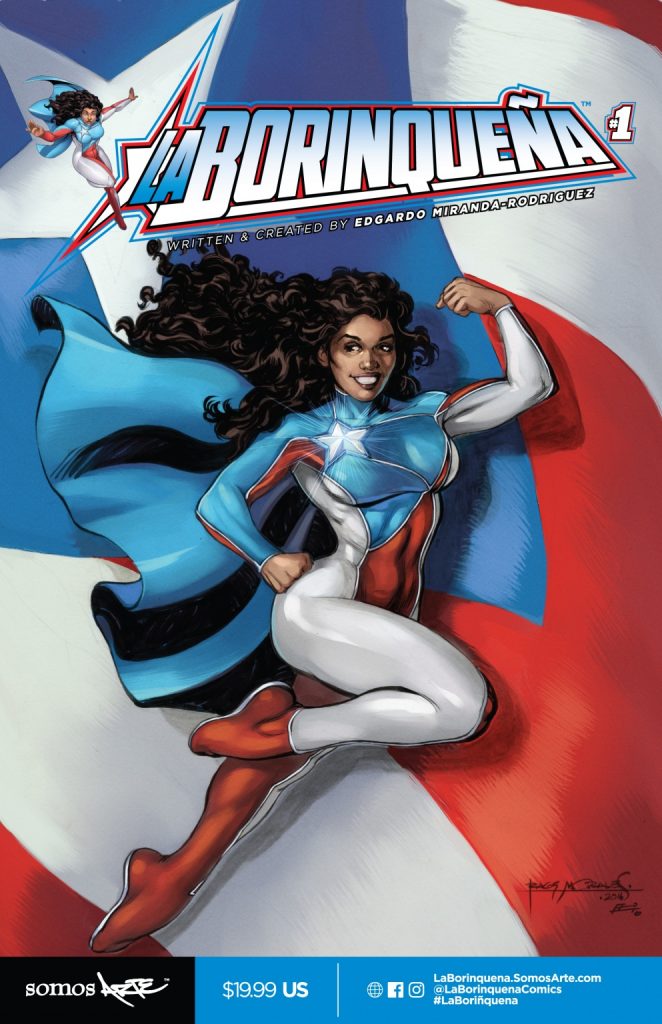
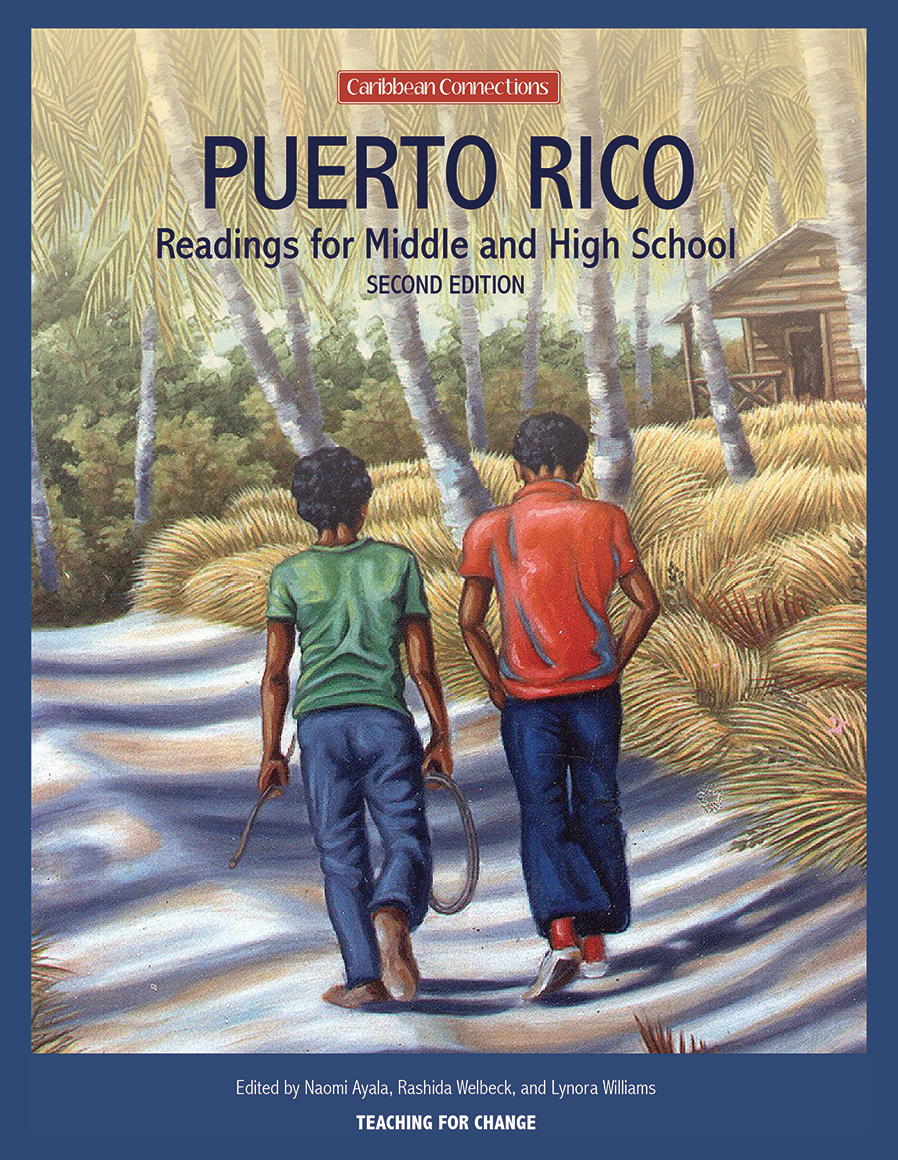
Leave a Reply